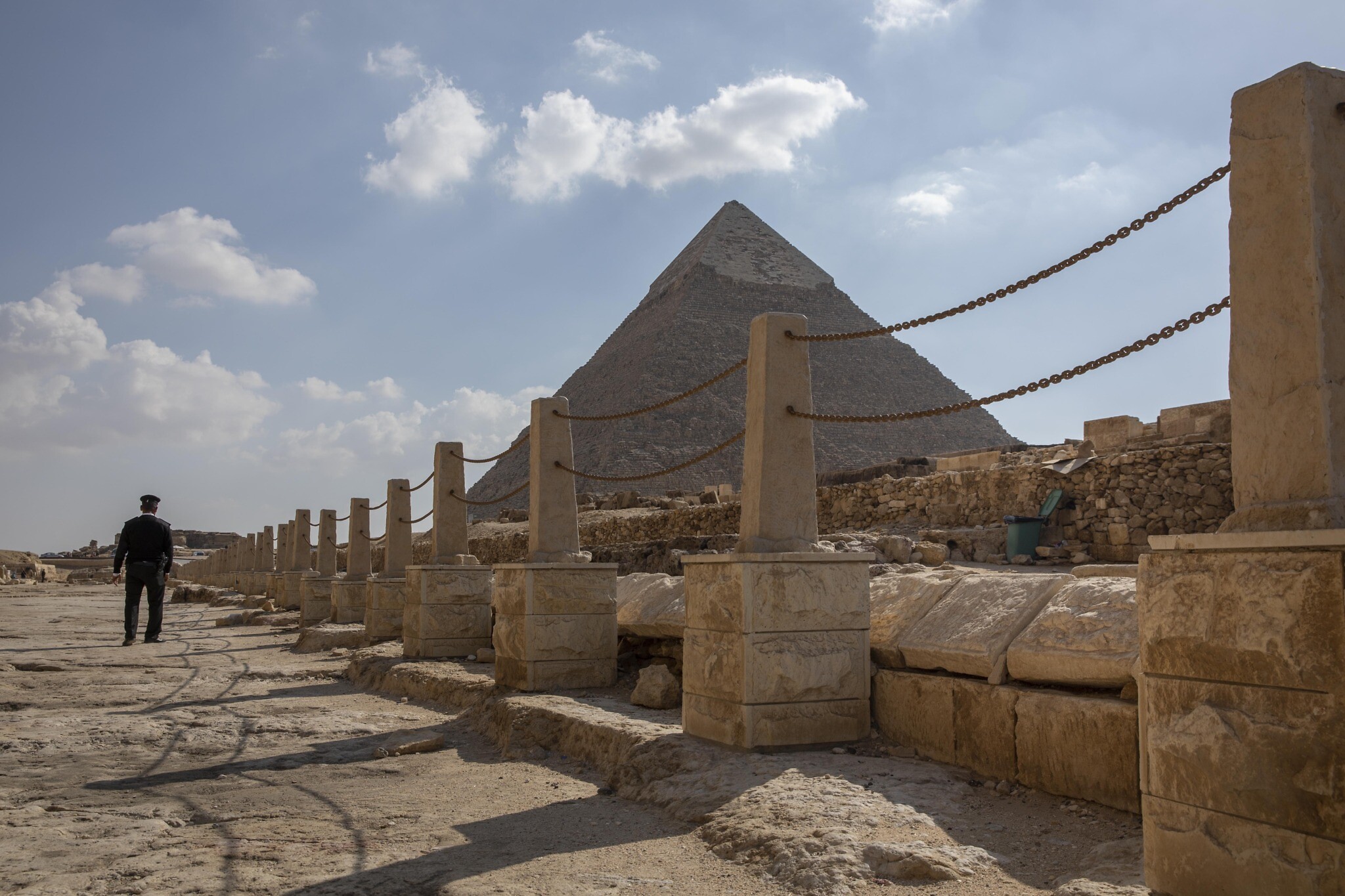A recent study suggests ancient Egyptians were assisted in building the Giza pyramids by what is now a dried-up arm of the Nile River, allowing the transport of materials to the site that may have otherwise been impossible.
Hader Sheisha of Aix-Marseille University and a team of researchers believe Egyptians likely used the Khufu branch of the Nile River, which reached the Giza area, to send materials to construction sites.
The multidisciplinary team, which included experts in geography, history, ecology, geoscience and more, determined that this branch of the Nile was at its peak from 2700 to 2200 BCE — overlapping with the same period in which Giza’s three main pyramids are believed to have been built.
The study, published in the peer-reviewed journal Proceedings of the National Academy of Sciences on August 29, analyzed rock layers of the Giza floodplain, as well as fossils from the area, to understand the changing water levels in the region’s history.
“From the third to the fifth dynasties, the Khufu branch clearly offered an environment conducive to the emergence and development of the pyramid construction site, helping builders to plan the transport of stone and materials by boat,” the research team wrote in the study.
“It was impossible to build the pyramids here without this branch of the Nile,” Sheisha, the study’s head researcher, told The New York Times.
A boat tour on the Nile River past the Great Pyramids, in Cairo, Egypt, August 18, 2017. (AP Photo/Amr Nabil)
The researchers said that by the Egyptian Late Period, spanning from 525-332 BCE, the branch’s water levels had fallen. They noted other studies showing lower oxygen levels in mummies’ teeth and bones from the time period, which indicates lower water consumption.
The findings bolster previous theories about the transportation of building materials to the Nile river, which suggest that ancient Egyptians utilized flooding in the river as hydraulic lifts to transport materials, according to CNN.
The research was prompted by the 2013 discovery of papyrus fragments, some dating as far back as the pharaoh Khufu’s reign, which discuss the use of the Nile to transport building materials to the site of the Giza Pyramids.
“When I read about that,” Sheisha said, “I was so interested because this confirms that the… pyramid’s building materials were moved over water.”
Researchers from other fields have lauded the findings, noting the increasing influence that environmental science has on the modern understanding of ancient history.
“We are getting a more realistic, and more dynamic understanding of human societies further back in time” by incorporating scientific analysis into the study of history, said Joseph Manning, who teaches classical history at Yale.

A policeman walks near the empty Great Pyramid, built by Cheops, known locally as Khufu in Giza, Egypt, March 16, 2020. (AP Photo/Nariman El-Mofty)
He noted that the findings could be relevant to how society grapples with modern issues, such as climate change.
“Climate science, like in this paper, is giving us fundamentally new information… [that is] very relevant to what’s happening today,” he said.
